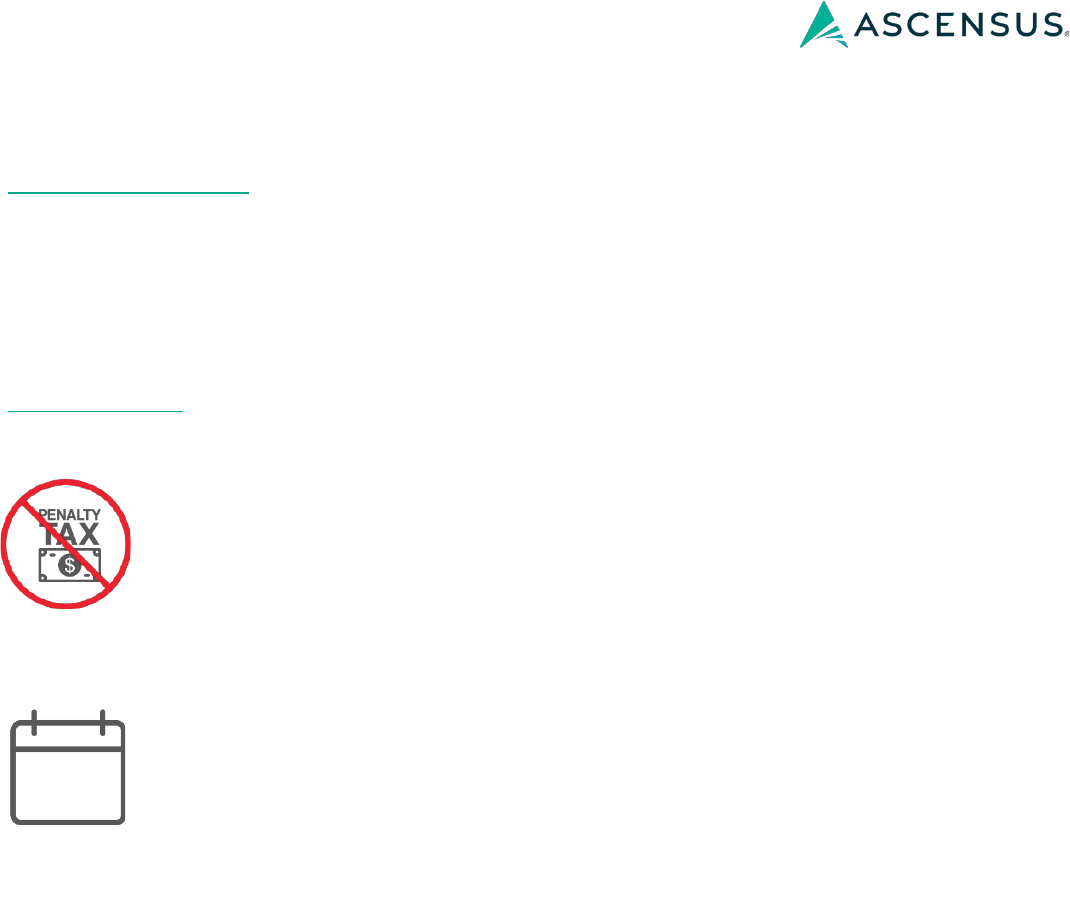
(04/2024) - This material is for informational purposes only and is not intended—nor should it be relied on—as legal, tax, accounting, or
investment advice. You should consult with your competent legal, tax, accounting, or investment advisors for guidance on your specific
issues or questions. This content reflects known information as of the publication date and may not reflect the most up-to-date information
on this topic; nor is it represented to be error-free.
Ascensus, LLC provides administrative and recordkeeping services and is not a broker-dealer or an investment advisor.
Ascensus
®
and the Ascensus logo are registered trademarks of Ascensus, LLC.
Copyright ©2024 Ascensus, LLC. All Rights Reserved.
How IRS Notice 2024-35 Affects
Beneficiaries
Proposed RMD regulations were released in February 2022.
Under the proposed regulations, if an account owner dies on or after their required beginning date, beneficiaries
who are subject to the 10-year rule must take annual life expectancy payments during the first nine years.
This applies to beneficiaries of account owners and to successor beneficiaries of eligible designated
beneficiaries who died in 2020 or later.
No penalty tax
IRS Notice 2024-35 states that final RMD regulations, when released, are anticipated to apply no earlier than
the 2025 distribution calendar year.
• Defined contribution plans that failed to make 2024 life expectancy payments under the
10-year rule to designated beneficiaries will not be treated as failing to satisfy the RMD
requirements.
• The IRS will not enforce the IRC Sec. 4974 excess accumulation penalty tax for
designated beneficiaries who do not take their 2024 life expectancy payments under the
10-year rule.
• Similar guidance for 2021, 2022, and 2023 was issued in Notice 2022-53 and Notice
2023-54.
This specified relief is limited to distributions required to be made in 2024 under the
proposed 10-year rule in a defined contribution plan or IRA for a designated beneficiary if
• the account owner died on or after their RBD in 2020, 2021, 2022, or 2023, and
• the designated beneficiary is not taking lifetime or life expectancy payments.
This 10-year rule relief also applies to successor beneficiaries of an eligible designated
beneficiary if
• the eligible designated beneficiary died in 2020, 2021, 2022, or 2023, and
• that eligible designated beneficiary was taking lifetime or life expectancy payments.
There are still unanswered questions surrounding this guidance, including the
following:
Q: Will designated beneficiaries and successor beneficiaries who do not take their 2021, 2022, or 2023 life
expectancy payments be required to take those payments in the future?
A: Generally, only Congress (not the IRS) has the authority to waive RMDs. This may explain why the IRS
waived the penalty tax, but stopped short of waiving the payments. Ultimately, under the circumstances, it
remains to be seen if such payments will be required if the IRS maintains its interpretation of the 10-year
rule. Expect this to be addressed in future guidance.
Q: Are amounts that would have been distributed to satisfy a 2021, 2022, 2023, or 2024 life expectancy
payment still considered an RMD for other purposes (e.g., rollovers)?
A: If 2021, 2022, 2023, or 2024 life expectancy payments are not taken, it appears likely, given the proposed
regulations, that such amounts generally would be considered RMDs for all purposes. For example, it would
appear that such amounts would be ineligible for rollover. Expect this to be addressed in future guidance.
Proposed
10-Year
Rule
